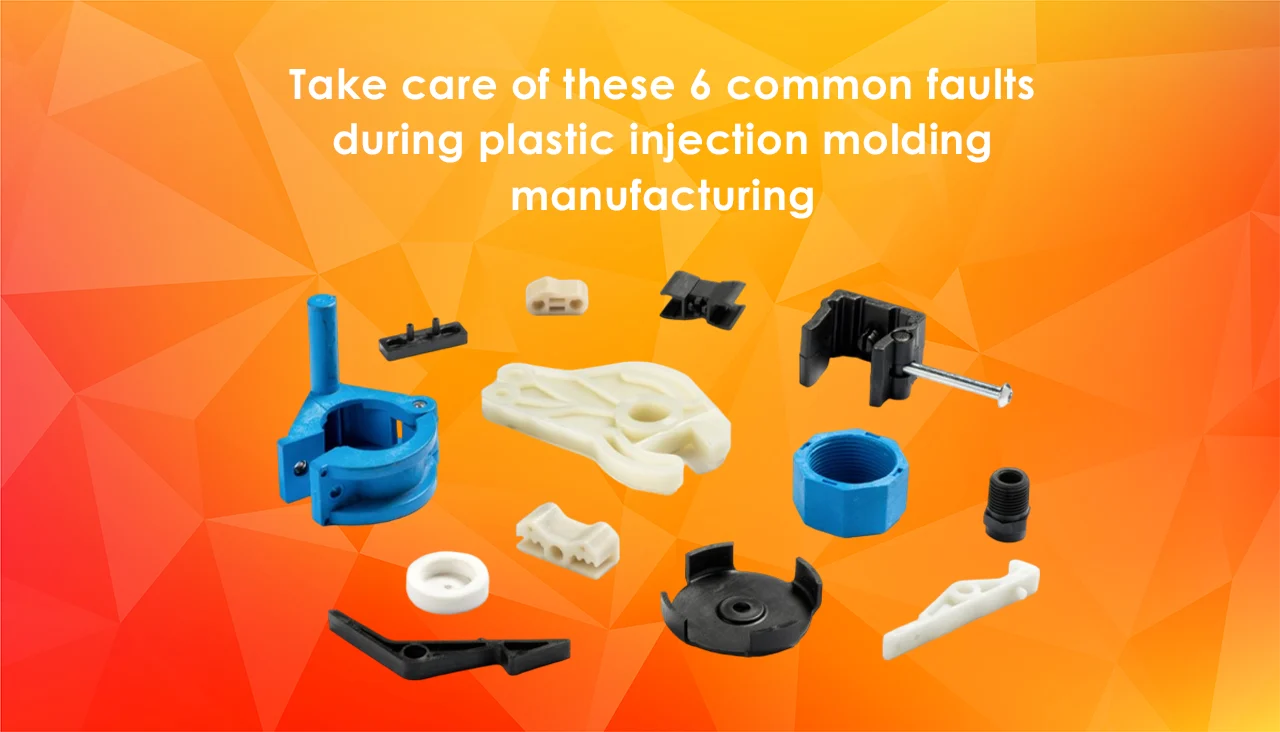Plastic injection molding service presents several opportunities for costly mistakes. Injection-molded items may have a variety of quality difficulties, from small surface flaws to more significant faults that may impair the product's performance, functionality, and safety. They may be brought on by issues with the usage of materials, the design of the tooling, the molding process, or a mixture of the three. However, like with any quality issue, half the battle is won by understanding how molding faults develop. You can reduce expenses associated with unsold items and product returns if you're an importer or producer of injection-molded products and you have some understanding of typical molding flaws and how to avoid them.
Common defects that occur during plastic injection molding manufacturing:
Some molding flaws could be expensive or difficult to fix. Without having to modify the mold tooling or swap out other manufacturing machinery, others can be avoided by altering the molding process. The flow rate, temperature, or pressure of your mold may usually be adjusted by a plastic injection company like Plastic Injection Molds to rather easily prevent these flaws.

- Flow lines: Flow lines often emerge on thinner portions of the molded item as a wavy pattern that is frequently a little different hue than the surrounding region. They might also take the form of ring-shaped bands on the surface of the product close to the locations where the molten material enters the mold by plastic injection mold makers. Flow markings normally have no effect on the component's integrity. But if they are present in particular consumer goods, like high-end eyewear, they can be ugly and possibly undesirable.
- Burn marks: Burn marks sometimes take the form of a surface or edge discoloration that is black or rust-colored on molded plastic parts. Generally speaking, burn scars don't compromise the integrity of the part unless they severely burn the plastic. Burn marks on injection-molded items are often caused by trapped air or by the resin heating up in the closed mold during plastic injection molding manufacturing. Burns are frequently caused by overheating, which is frequently caused by excessive injection rates or material heating.
- Warping: When a component shrinks in diverse ways, warping, a type of distortion, can happen in injection-molded goods. Similar to how uneven drying causes wood to warp, uneven shrinkage during cooling causes various parts of a molded object to be under excessive tension, which causes the material to warp. The completed part bends or twists as it cools because to the excessive tension. This is demonstrated by a component that, although being designed to lay flat, creates a gap when placed on a level surface. The over-cooling of injection-molded plastic and related materials is one of the major reasons of warping.
- Air pockets: In a final molded component, vacuum voids, also known as air pockets, are air bubbles that have been trapped. Professionals in quality control often view voids as a minor flaw. Larger or more frequent voids, however, might occasionally weaken the molded component because air exists underneath the part's surface where molded material should be present. Insufficient molding pressure to release trapped air from the mold cavity is one of the main causes of voids. Occasionally, the substance nearest to the mold wall starts to cool too rapidly, hardening and pulling the material outward, forming an abscess. However, all this is taken care of by large plastic injection molding companies during this process.
- Sink marks: Sink marks are minute depressions or recesses in a molded part's otherwise level and uniform surface. These can happen when a molded component's inside shrinks, drawing material from the exterior inward. Vacuum voids and sink marks are similar, but their causes and effects are the opposite. Near the perimeter of the component, the material cools rather slowly rather than too quickly. Before it has a chance to fully cool, the ensuing shrinking draws the outside material inward, causing a depression. Sink marks are much more prone to appear in thicker areas of a component, similar to voids. But steps can be taken by plastic injection molding companies to prevent these.
- Weld lines: Just on the surface of a molded component, weld lines may emerge where the molten material converges after breaking off into two or even more orientations in the mold. Weak material bonding caused by the weld line's appearance of hairs reduces the part's strength. When colliding, two or more fronts of molten polymer or other material must preserve a specific temperature. A weld line will form if they don't adequately bind where they meet and become partially cemented. However, these can be prevented and cured as well by the plastic injection parts manufacturer before it's too late.
Endnote:
Injection molding production often requires plastic injection molding companies near me and a sizable initial tooling expenditure. Because of this, it's crucial to build your mold correctly the first time around rather of needing to start over after discovering major flaws. Problems relating to the material or molding process are typically simpler and less expensive to fix. However, mold product flaws can have a serious negative impact on your bottom line regardless of the cause.


